- Opinion
- Posted
Staying Power

Responding to the Department of Communications, Marine & Natural Resources’ Green Paper “Towards a Sustainable Energy Future for Ireland”, Mark Coyne, Technical Director of Dalkia Ireland, outlines the challenges and responses to the three main pillars of the Green Paper – sustainability, competitiveness and security of supply.
Arguably two of the greatest challenges facing mankind today are how we can alter the course of climate change, and how future generations will meet their energy demands considering the eventual decline of fossil fuels.
The last 100 years has seen a global temperature increase of some 0.7?C, however future predictions for climate changes are more severe. If current trends continue, by the end of the century global temperatures could rise on average by 5.8?C , while sea levels could rise by as much as 0.4m with devastating consequences for future generations. This points to a need to view all aspects of energy in terms of sustainability, one of three pillars of energy policy considered in the Green Paper.
At the same time, some debate exists as to the timing of global peak oil production. While the timing of this event is unsure, its occurrence is assured, and with it is likely to come an end to an era of cheap and plentiful supply of energy. While in the past the abundant and cheap energy supply has been the bedrock of economic growth, its anticipated decline introduces concerns over competitiveness—the second pillar of energy policy considered in the Green Paper.
As an island nation with limited conventional energy sources of its own, Ireland is particularly exposed to any interruptions or restrictions in energy supplies. Currently Ireland is the seventh most oil dependant nation on earth, with over 60% of its primary energy currently supplied from oil, which underlines the nation’s vulnerability. This highlights the need for Ireland to reduce its dependency on oil, and to address our vulnerability in terms of security of supply – the third and last pillar of energy policy considered in the Green Paper. Dalkia’s proposals to address these challenges are outlined below:
Combined heat & power plants
The benefits of combined heat and power (CHP) are well understood, namely that they can produce heat and electricity more efficiently than separate heat and centralised electricity production with associated transmission losses. Typically, CHPs can achieve 25% energy savings compared to Centralised CCGT electrical generation and separate production of heat.
CHP uptake in Ireland over the last 5 years is widely acknowledged as a failure, and continues to be ranked among the lowest in the EU in terms of uptake, well below the current EU average of 10% of installed electrical capacity. Dalkia proposes the following actions to promote and accelerate the uptake of CHP in Ireland.
CHP targets
The targets proposed in the Green Paper, namely growth to 400MW by 2010, while welcome is not considered in our view to be sufficiently ambitious. Dalkia proposes that a target of 900MW of installed CHP capacity by 2010 be established (an additional 500MW). This target equates to 18% of installed electrical capacity and corresponds with EU wide targets in the corresponding periods.
 Dalkia have been involved in countless large scale energy projects around the world, including district heating plants and CHP based district heating
Dalkia have been involved in countless large scale energy projects around the world, including district heating plants and CHP based district heating
 Maintenance work being carried out on district heating pipework in Strasbourg
Maintenance work being carried out on district heating pipework in Strasbourg
CHP electricity power purchase agreements
The market uncertainty surrounding the spark spread (the difference between the cost of electricity and gas) is the single biggest detractor to potential CHP investors since it makes them incapable of taking a long-term perspective on potential CHP investments. Ireland needs to provide a stable market outlook for potential CHP investors to allow them to view the economic benefit over the full lifecycle of a project. This can be achieved by introducing CHP purchase contracts that include a variable pricing component designed to isolate the profitability of the investment from deviations in the spark spread.
The Irish approach could be based on the French experience in response to the same problem. In 1997, France introduced a policy giving CHP developers the opportunity to sign a 12-year contract with French Power Utility EDF, whereby EDF were obliged to purchase CHP electricity at a premium rate. Any variation in the spark spread was absorbed by a variable cost component based on the ratio of the current gas price to a reference gas price. This effectively fixed the profit margin of the CHP investment and passed on the financial risk to the market under a public service obligation levy. In the three years that followed, over 3000 MWe of CHP plant was developed in France.
CHP community electricity supply
In CHP applications where there is more than one energy off-taker (such as multi-user commercial or residential developments), the sale of heat to those multiple users is possible. However, under current legislation, due to the need to provide choice of electricity supplier, CHP electricity cannot be sold directly to those multiple users without the establishment of a supply company, which is usually economically unjustifiable. Dalkia proposes that this restriction be removed, thus making multi-user CHP projects viable.
Heating of buildings
Considering that 46% of all secondary energy in Ireland is consumed in the buildings sector , Dalkia considers that the Green Paper gives insufficient focus on this, the single largest sector of energy consumption. The following proposals target this key sector:
 Biomass district heating
Biomass district heating
Nationwide implementation of “Fingal initiative”
Over the past decade there has been an unprecedented boom in the construction of houses in Ireland. One third of the housing stock is now less that 10 years old and we are adding to our housing stock at twice the rate of increase of population annually . In 2005 alone, over 5% was added to the housing stock, the highest rate of residential building in the in EU. This construction boom gives Ireland an unprecedented opportunity to improve the energy efficiency of the housing stock.
The construction industry is driven by commercial interests and the objective to maximise profits. Because of the discontinuity between construction profit maximisation, and ongoing energy costs, there is little incentive on the developer/constructor to reduce energy and address sustainability requirements, which require additional capital costs. Dalkia believes that this discontinuity can only be addressed through policy intervention and the setting of minimum standards.
Such a policy has already been adapted in certain local area plans of Fingal County Council, and is being considered by other counties for adoption across the entire county. The two key mandatory requirements within these area plans are the achievement of 60% energy reduction from current building regulations base case, and 30% of energy to be supplied from a renewable energy sources.
Dalkia propose that the above Fingal mandatory planning requirements be immediately applied nationally to all new housing developments. An example of how a local policy requirement such as the one above has been rolled out on a national basis can be seen in the recent successful introduction of solar heating panels as a mandatory requirement in all new Spanish buildings. This policy was initially introduced in the Barcelona urban area and subsequently adopted nationally.
Through the introduction of the above requirement, Dalkia estimate that the total energy savings would amount to over 6TWh per annum, equivalent to over 500,000 tonnes of oil.
Biomass district heating systems
The concept of a District Heating System (DHS) is a simple one – the centralised production of heat, and the distribution of that heat through a network of insulated piping, usually underground. While the uptake of DHS uptake in Ireland has been very poor, it is widely used on the European continent, where over 3% of total heat sales (400TWh) are delivered through DHS networks to a total of 100 million end users.
 Energy efficient lighting being installed in a Blockbuster video store
Energy efficient lighting being installed in a Blockbuster video store
A study commissioned by SEI in 2002 evaluated the potential of the market for DHS in Ireland. In the opinion of Dalkia, this report contained three flawed suppositions. Firstly, it assumed that DHS without a CHP is “not normally cost effective”. This is not the case, and Dalkia have evaluated that DHS with biomass heating is in many cases a very economic solution. Secondly, the report also indicates that the economic potential of CHP fed DHS is 50MWe, with a market potential of zero, which Dalkia believe to be a gross underestimation of the real potential. Lastly, the report states that the lack of market potential is caused by the mild Irish climate and quotes this as a factor for successes in the more northerly Nordic countries. Dalkia operates over 400 DHS plants in France, many of which have a lower heating requirement than that in Ireland.
Dalkia propose a realistic target of 300MWth of heating delivered through biomass DHS by 2010.
Capital allowances for district heating systems
DHS projects are highly capital intensive. In many cases these projects are justifiably economic on their own merits, however there is an opportunity to extend the potential of other DHS projects through the introduction of a capital allowance scheme. Dalkia recommends the introduction of a scheme whereby investors can obtain a guaranteed return similar to that used in other sectors such as rural housing and hotels in Ireland.

Energy efficient lighting being installed in a HMV store (above), and at a Manor Bakeries factory (below)

Tradable energy savings certificates
Dalkia welcomes the Green Paper target to deliver cumulative improvements in energy efficiency of 20% by 2020. The introduction of energy awareness and energy efficiency campaigns, and the implementation of various SEI schemes such as the Greener Homes scheme are very welcome. Dalkia however believes that such measures alone will not deliver the required energy efficiency targets. A significant market/policy intervention is required to deliver such a target.
To deliver these efficiency targets, Dalkia proposes the introduction of tradable energy savings certificates (ESC). Such systems have already been successfully implemented in France, Italy and the UK. An ESC system places a binding energy saving obligation on large-scale energy retailers. Through the delivery of those energy saving targets by ESCOs, parties earn certificates which can be traded in the event of a surplus, otherwise a penalty will apply for failure to achieve the required number of ESCs.
Biomass combined heat and power
The Green Paper recognises the contribution of wind energy as a mature technology, and one which can currently deliver the greatest impact in meeting the target of 15% renewable electricity by 2010, and 30% by 2020. The Green Paper also recognises that this implies a flexible and diversified electricity portfolio, reflecting the variability of wind availability.
Biomass CHP has the potential to address this portfolio diversification, and also has the advantage of being a mature technology. The Renewable Electricity Feed in Tariff (REFIT) scheme introduced in May 2006 was designed to support biomass CHP, however the applicable tariff rate of 7.2c/kWh is considered by Dalkia to be too low to encourage investments in this technology. Dalkia recommends revising the biomass CHP feed in tariff rate to >10ckWh, and the adoption of a biomass CHP target of 50MWe by 2009.
Post-occupancy research & development
The Green Paper highlights the critical role that research and development (R&D) plays in establishing and implementing sustainable energy policies for Ireland. While the Green Paper highlights technological breakthroughs as the main focus of R&D in Ireland, Dalkia’s view is that research on energy consumption and behaviour patterns would deliver immediate benefits, especially in the area of building post-occupancy energy consumption.
Lighting efficiency
An estimated 20% of global electrical energy production today is used for lighting . While in the future, high efficiency light emitting diode (LED) technology has the potential to save 30% of today's consumption for general lighting by 2015, a substantial savings potential exists with existing technologies such as compact fluorescent lighting (CFL). Dalkia recommends that consideration be given to the phasing out of the sale of low efficiency lighting within 5 years, where other higher efficiency alternatives exist.
Delivery of consumer efficiency targets
The EU action plan for energy efficiency identifies that the “largest cost-effective savings potential” lies in the households and commercial buildings sectors, where the savings potential is estimated to be around 27% and 30% respectively. To address these sectors, Dalkia recommends a 3-step approach as follows:
Firstly, the immediate introduction of improved building efficiency standards such as the nationwide implementation of the Fingal initiative. Secondly, the implementation of a household energy carbon tax, whereby CO2 intensive energy such as coal would receive a high level of taxation, and low carbon energy sources such as biomass would receive little or no taxation. Finally, the introduction of a household CO2 quota policy, based on the number of occupants in a household. Under the quota system, an obligation would be placed on major retailers of primary household energy (electricity, gas, oil, LPG and so on) to identify all energy sales against individual households, which would be monitored by the system administrator. If a household exceeds its quota, an additional energy tariff is applied. At the end of the reconciliation period, which could be yearly for instance, if a household has emitted less CO2 than its quota, the tariffs collected from other users are proportionality distributed to the low carbon intensity consumers, thereby rewarding efficient consumption.
- Articles
- Opinion
- Staying Power
- biomass
- chp
- district heating
- fingal
- green paper
- dalkia
- energy certificates
- sustainability
- Climate Change
- peak oil
Related items
-
 Property industry faces ‘triple threat’ from climate crisis
Property industry faces ‘triple threat’ from climate crisis -
 Irish Green Building Council launch event to promote sustainable building practices
Irish Green Building Council launch event to promote sustainable building practices -
 Ashden Awards winners showcase climate solutions
Ashden Awards winners showcase climate solutions -
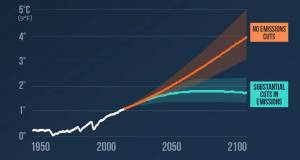 ‘Sufficiency’ key alongside energy efficiency & renewables, says IPCC
‘Sufficiency’ key alongside energy efficiency & renewables, says IPCC -
 Dulux Decorator Centre launches carbon reduction plan
Dulux Decorator Centre launches carbon reduction plan -
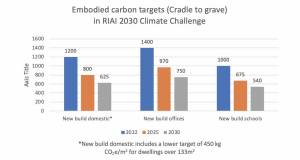 RIAI launches 2030 climate challenge
RIAI launches 2030 climate challenge -
 Climate action plan sets embodied carbon targets for construction
Climate action plan sets embodied carbon targets for construction -
 Grant invests in biofuel tech for oil boilers
Grant invests in biofuel tech for oil boilers -
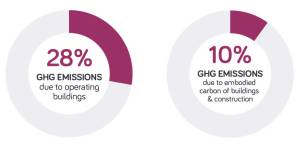 Architects call for urgent climate action ahead of COP 26
Architects call for urgent climate action ahead of COP 26 -
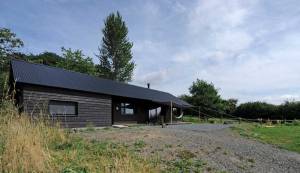 The PH+ guide to overheating
The PH+ guide to overheating -
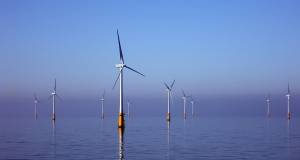 Net zero carbon plans back renewables over fabric
Net zero carbon plans back renewables over fabric -
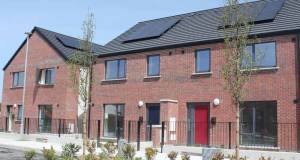 Building sector must show bold climate leadership
Building sector must show bold climate leadership

